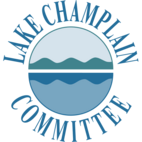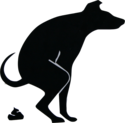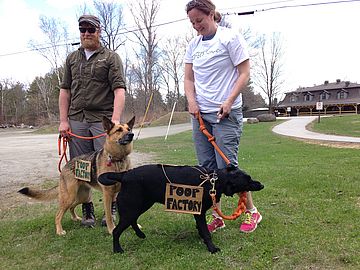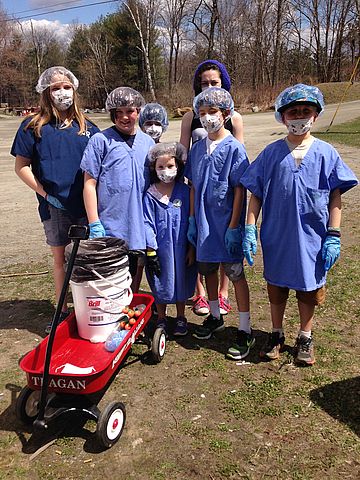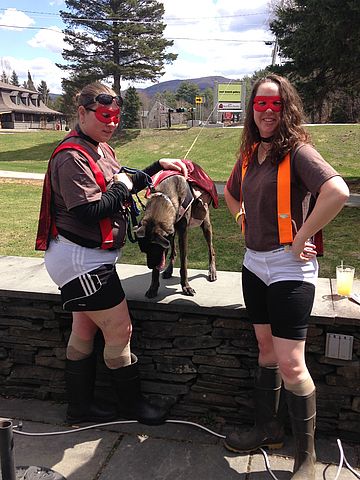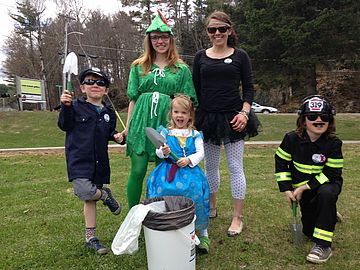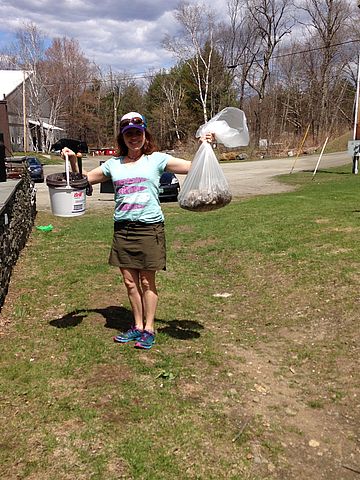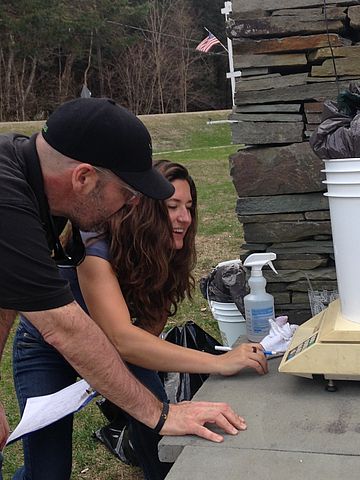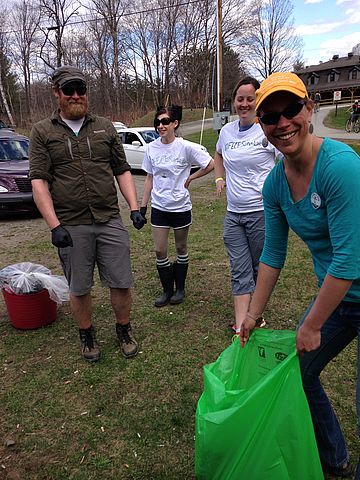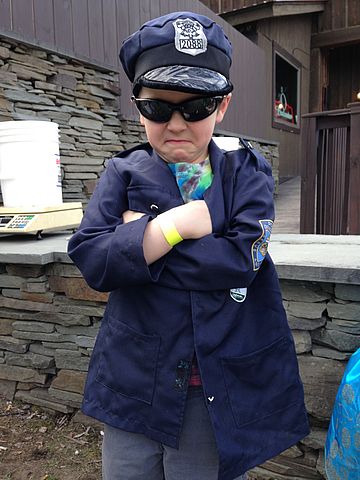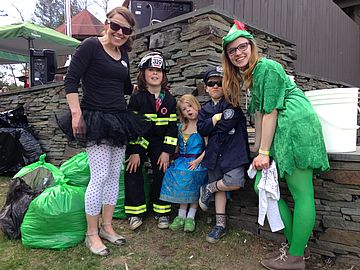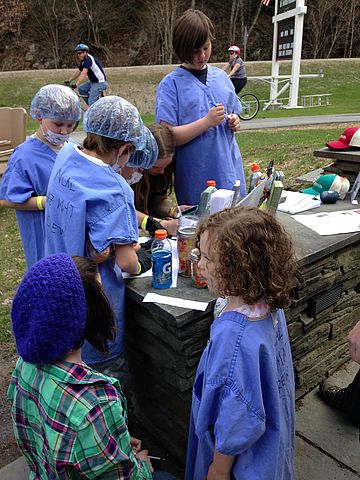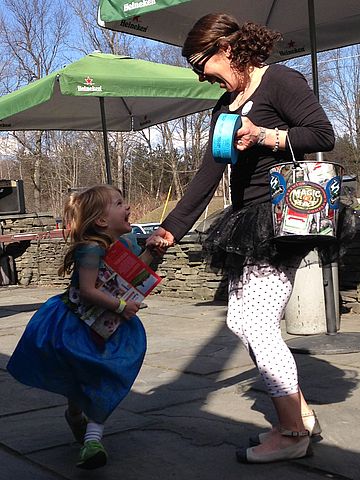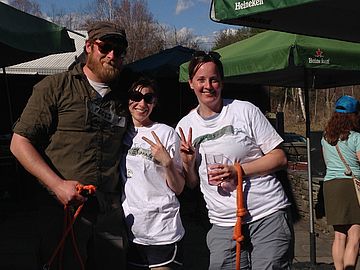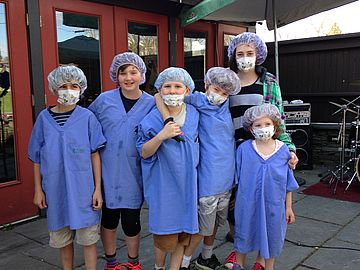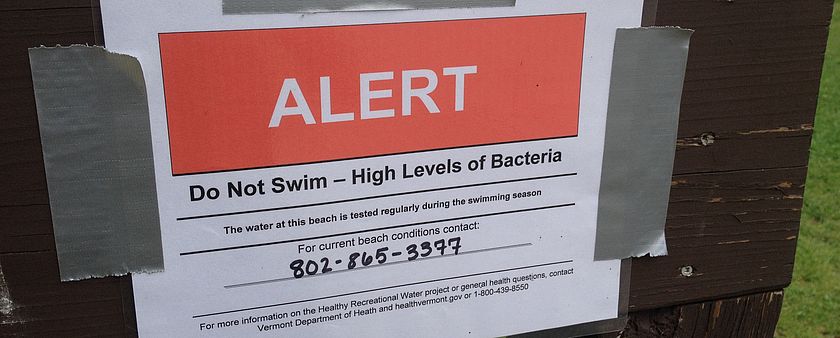
Bacteria
The warm sand and cold water of Lake Champlain’s beaches are quintessential cures for the dog days of summer. As air and lake temperatures rise, more people flock to the lake for a swim. Imagine the disappointment if they reached the water only to find a sign warning that the beach is closed due to health risks.
In some places, old and leaking septic systems may be nearby, leading to beach closures. At other locations, extensive urban development may mean stormwater runoff carries bacteria to a beach. Warm, shallow areas of the lake are more susceptible to high bacteria counts than cold, deep waters. Areas with little or no development around them are unlikely to have problems with contamination. Potential sources will differ with every beach, so it would be inappropriate to generalize about beach health for Lake Champlain as a whole.
New York, Vermont and Quebec have different standards for determining when bacterial levels are high enough to close beaches and even for how frequently beaches should be tested. However, one generalization can be made: bacterial levels tend to be highest at any beach following a rainstorm, particularly in urbanized areas.
Major storms can cause overflows at wastewater treatment facilities, further contributing to bacterial loads. Urbanized areas use wastewater treatment plants more than rural areas. Even without such overflows, sources of bacteria accumulate on land between storms and move to a water body with stormwater runoff. Water moves greater distances over paved land, thus having more opportunity to pick-up bacteria as compared to grasses, fields or forests, where the water can seep into the ground.
In most parts of Lake Champlain on most days, swimming is healthy, enjoyable recreation. In urbanized areas following a rainstorm, swimming might best be avoided for a day or two.
The Scoop on Dog Poop
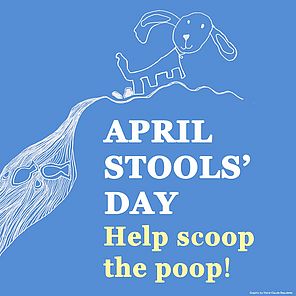
Besides the foul smell and the unpleasantness of stepping in hound mounds, pet poop is bad for waterways, lawns and people. Pet waste carries nutrients that feed the growth of weeds and algae in the water. The Environmental Protection Agency (EPA) estimates that two or three days' worth of droppings from just 100 dogs contributes enough bacteria to temporarily close a waterbody to swimming and fishing. Woof-waste doesn't make good fertilizer; it burns grass, leaves unsightly discoloring, and takes more than a year to break down.
Dog poop differs from wild animal scat, which fertilizes the earth and helps spread native seeds. Wild animals are consuming food within the ecosystem where they poop, so there is no net loss or gain of nutrients. Dogs, on the other hand, are fed a high nutrient diet from a bag. Those excess nutrients like nitrogen and phosphorus can throw the ecosystem out of balance when they’re introduced in dog doo, and that instability provides a welcoming environment for invasive species on land and can trigger algae growth and cyanobacteria blooms in the water.
- When pet waste washes into lakes or streams it decays, using up oxygen and degrading water quality.
- Dog waste contains 23-million fecal coliform bacteria per gram, 10-times more per pound of body weight than even cows produce.
- Pets are responsible for up to one-third of bacterial pollution in waterways near developed areas.
- Ten to fifty percent of bacteria in air samples comes from feces with dog poop being a particularly dominant source.
- Pet waste takes a year or more to breakdown. Even after that the parasites can survive in the soil for years.
- Infected pet poop can carry roundworms and other parasites and pathogens (like cryptosporidium, giardia, salmonella, E. coli, and other fecal coliform bacteria) which can linger in soil for years. Anyone gardening, playing sports, walking barefoot, or digging in the infected dirt risks becoming infected. Children are most susceptible since they often play in the dirt and put things in their mouths.
What do you do with the poop?
Pick It Up
Whether you’re at home or on a walk, don't leave pet waste lying around. Take a bag (preferably a biodegradable one) with you on your outings and pick up the poop you find on sidewalks, trails, and parks. Your actions will help protect our waterways.
Trash It
According to local public works officials, bagging your dog poop and throwing it away is the best way to deal with it. The dog poop will safely break down in the landfill, and its methane gas can be burned for energy recapture. You can purchase compostable doggie bags to avoid using plastic.
Bury It
Burying small amounts of dog waste in your yard will allow soil micro-organisms to break it down while keeping the poop from being washed away by the next rainstorm. Dig a one-foot deep hole and fill it with three inches of dog waste and cover it with at least eight inches of soil. The waste can be deposited in multiple locations around your yard but keep them far away from waterways and your vegetable garden. You can also buy a mini pet septic system or create your own!
Don’t flush pet waste down the toilet as too often bags get flushed along with the feces. Even biodegradable bags will damage the wastewater treatment facility’s equipment, and the parasite associated with toxoplasmosis (which is found in cat poop) can survive the water treatment process.
April Stools' & Scoop the Poop Days
The Lake Champlain Committee (LCC) annually hosts and coordinates April Stools' Days and Scoop the Poop events throughout the Lake Champlain watershed. The programs enlist volunteers in cleaning up dog doo before snow melt and spring rains send the accumulated pet waste into our waterways. If you're interested in hosting or volunteering for a physically-distanced clean-up event in your community contact LCC at lcc@lakechamplaincommittee.org, 802-658-1414.
